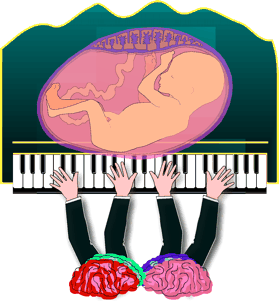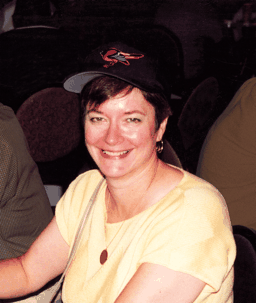Biotechnology: Another Genie out of the Bottle
The Shattered Self. Pierre Baldi. MIT Press; 2001. 245 pages. $24.95. ISBN: 0262025027

Many bioethics texts share the same conservative punch line: we ought to be extremely careful and proceed very slowly with
biotechnology, because we must preserve our notion of humanity and of who we are. Of course, I agree that we ought to be careful.
But preserving our humanity is not a good reason. It amounts to saying that we should be careful exploring the oceans, because
we have to preserve our notion that the Earth is flat. [p 136]
Pierre Baldi, Professor of Information and Computer Science, of Biological Chemistry in the College of Medicine, and Director of the Institute for Genomics and Bioinformatics at UC Irvine, has written a very thought-provoking book. His primary focus is on recent work in biomedicine and on speculations as to where biomedicine may be headed in the future. He also quotes many familiar scientists, novelists, and other socially prominent professionals, in regard to changes in the cultural landscape precipitated by biotechnological breakthroughs.

Baldi's major tenet is that recent insights into the human genome, cloning, and in vitro fertilization, along with our rapidly expanding computing capacities, spell the end of natural evolution. To substantiate his claim, Baldi describes much of the actual technology available today, and extrapolates this knowledge far into the future—well beyond what most scientists would accept as possible within several lifetimes. As an example, he discusses the possibility of recreating extinct species by retrograde DNA, morphing available genomes back to a common ancestor, and then morphing the resulting DNA back up another limb of the evolutionary tree. Even as a fan of science fiction, I had a hard time with extrapolations such as this, probably because they were couched, not as fiction, but as scientifically foreseeable eventualities.
The book is not an easy read, partly due to its conceptual challenges. Clearly, Baldi intends for his reader to engage in some very philosophical issues, in highly quantitative terms. But in addition, the book is often functionally awkward: almost one-third of the book consists of appendices and endnotes (and in one case, an endnote to an appendix). And although the book is divided into discrete chapters, (e.g., Molecular Biology; Human Cloning; Computers; The Last Frontier: The Brain), the author intermingles within each chapter all of the topics covered within the book, so that while reading, one would be hard pressed, short of seeking out the chapter heading, to identify the particular topic that is under discussion. The most readily identifiable themes that run through the book are: the possibilities of human cloning; in vitro fertilization, constructed as a possible end to sexual relationships; and the storage and computing capacity of computers.
Another problem in reading this book is that some of the most interesting information occurs in appendices and endnotes, and it is often distracting to have to remember to keep flipping to the back of the book. I suspect that my annoyance in this respect reflects my empirical bias, because the body of the text itself is strongly imbued with the author's beliefs and theories, whereas the endnotes tend to provide supporting evidence, or in some cases superfluous, but nevertheless interesting, facts.
Some of the endnotes provide the critical analysis that is integral to the points that Baldi attempts to make in the main text, and the information would be much better placed along with the arguments presented in the main text. Although the author might argue that the incorporation of such endnote material into the text would interfere with the “flow” of his prose, I would counter that fluidity of thought is not one of the strengths of the book as it already stands. The author does a great bit of hopscotching from concept to concept in a way that resembles free-association. For example, in the chapter on the brain, there is a section on music in which Baldi argues that the twelve notes that constitute traditional Western music actually limit musicality. He then proposes that this limitation could be circumvented by modifying genomes so as to control the size and shape of performers' hands, or by creating conjoined twin pianists with one brain for each hand. Immediately following this rather gruesome concept, Baldi explores the Internet is an ideal medium for transmitting large amounts of digital music over any distance: Asserting that musicians are already playing together over the Internet, he speculates on the looming possibility of “jam sessions of planetary if not cosmic proportion.” An equally striking example of Baldi's strange juxtapositioning of theories is his description of the Spectrum Mall in Irvine, California, at the start of his final chapter. I am still at a loss as to how the stores and the Arabian decorative motif of this mall relate to the human condition as posited within the context of natural evolution and the possibilities raised by modern biology and computing techniques. These postmodern non-sequiturs run rampant through the book and I found them distracting to the point of being annoying.
Despite these distractions, The Shattered Self is very provocative and will, no doubt, appeal to minds more philosophically inclined than is mine. The book also offers many eye-catching photographs, some of which testify to the advances that have taken place in biology since the seventeenth century. One image in particular, the seventeenth-century drawing of human sperm, complete with homunculus, reminds us of the many tenaciously held “scientific” concepts that, in the face of legitimate scientific progress, we have had to discard. Whether we are truly entering a new phase of science that will require us to do away with currently valued theories—the major thesis of Baldi's book—remains to be seen.

- © American Society for Pharmacology and Experimental Theraputics 2001



